The Fifth Avenue Hotel | 1 West 28th Street
New York, NY
All the Rieslingfeier growers will be in attendance for this walk-around tasting. The event will largely focus on wines from the 2023 vintage, though back-vintage bottlings may be shown for context.
Leo Alzinger, Frank Schönleber
(Emrich-Schönleber), Julian and Nadine Haart, Lukas Hammelmann, Franz
and Theresa Hirtzberger, Mathieu Kauffmann (Karthäuserhof), Klaus Peter
and Julia Keller, Dominik Sona (Koehler-Ruprecht), Florian Lauer,
Christopher Loewen, Veronika Lintner (Egon Müller), Lucas and Johanna
Pichler (F.X. Pichler), Katharina Prüm, Hans and Valentin Rebholz, and
Thomas and Lara Haag (Schloss Lieser)
The two VIP sessions will be more limited in attendance, allowing guests a chance to interact with the growers on a more intimate level. For both of the VIP sessions the growers will also bring an additional special bottle to pour. All Rieslingfeier growers will be in attendance for all sessions.
Please note that we will be limiting each session to keep the tasting as organized as possible. We kindly ask all guests to show up on time and to leave once they are done tasting to make room for the following session(s). We thank you in advance for your co-operation.
Rieslingfeier Gränd Tasting
Alzinger, Wachau, Austria
Leo Alzinger
Austria’s Wachau, some 90 kilometers west of Vienna (about an hour’s drive), is a dramatic region of steep, terraced vineyards looming grandly over the Danube River. The Alzinger estate, run by Leo Alzinger and his son Leo Alzinger, make some of the most delicate and finessed wines of this famous region.
The Alzingers farm some of the most famous vineyards in the region including the Loibenberg and Steinertal. With only around 11 hectares under vine, this is truly a father-and-son operation. The Rieslings tend to come from the highest vineyards, parcels rich in primary rock. Harvest often happens later than many in the Wachau yet the old vines here do not simply produce more sugar, they rather push the physiological ripeness to greater balance. Alzinger normally presses whole-clusters with a short maceration, then allows the must to settle for 24 hours. The estate is seeking not opulence or power, but finesse and delicacy.
Frank Schönleber
Winemaking in the Emrich-Schönleber family can be traced back to the mid-18th century. It was, however, Wilhelm and son Werner Schönleber that transformed the mixed agricultural estate into a focused winemaking estate in the 1960s. By the 1990s the estate was regarded as one of the best in Germany; in 1994 they joined the VDP, the most elite grower’s association in Germany. Werner’s son Frank grew up around the winery; as of vintage 2006, Frank is the official winemaker while Werner is in charge of the vineyards.
Emrich-Schönleber is one of the “big three” growers in the Nahe, along with Dönnhoff and Schäfer-Fröhlich. They currently farm roughly 17 hectares of vines, 85% of which is planted to Riesling. Two “grand cru” sites define the estate: the grand Halenberg and the mineral Frühlingsplätzchen. The style at Emrich-Schönleber is about purity, depth, delineation. They are among the most subtle, meditative Rieslings of the Nahe with a fanatical following. The estate is among the most versatile in Germany, producing world class dry and sweet Rieslings.
Julian and Nadine Haart
David Schildknecht, writing for Parker’s Wine Advocate, introduced Julian Haart to the U.S. with the following sentence: “Not many wine careers can have started off on a more superlative level than Haart’s, yet from my several conversations with him I am convinced that his perfectionism goes hand in hand with rigorous self-criticism that should preclude success going to his head.”
Julian and Nadine farm a little more than four hectares in the middle Mosel, focusing on sites around Piesport (Goldtröpfchen) and Wintrich (Ohligsberg). This is, roughly, about as big as they want to get. Part of the joy of winemaking for these two is doing everything themselves. This is vineyard work, and winemaking, at the most human scale. Nearly everything must be done by hand – most of the vineyards are steep as hell and most of them are terraced. Even walking through them is a bit hazardous. At Haart, they produce both dry “terroir wines” and classic “Prädikat” wines. For all the wines, the focus is purity and finesse.
Lukas Hammelmann
Lukas Hammelmann farms just five hectares in the hinterlands of the Pfalz, (primarily) in two villages in the southeastern corridor called Zeiskam and Hochstadt. Away from the Weinstraße, villages without any easy narrative or context and who just two decades ago would have been deemed too cool to produce wines of consequence or intrigue. In the modern (warming) world – many are truly in the zone.
Growing up in the area, Lukas’s infatuation of not only the Pfalz but Riesling is infectious, he is a very serious and intense personality and his wines could not showcase his personality more innately. His wines play with incredible force, ruthless edges of vigor buoyed by a touch of very good elevagé, awash in saline and fistfuls of rocks, ideal and deft touches of ripeness – particularly for the Pfalz. His top parcels include a terraced site of 90+ year old ungrafted vines in Hambacher Schlossberg that Lukas painstakingly revived, as well as a few other Grand Crus from Hochstadt and Zeiskam. Lukas is a budding Pfalz star who truly has the touch, and his wines will undoubtedly be wines in the fore in short order.
Franz and Theresa Hirtzberger
Austria’s Wachau, some 90 kilometers west of Vienna (about an hour’s drive), is a dramatic region of steep, terraced vineyards looming grandly over the Danube River. Franz Hirtzberger farms a unique area of the Wachau, the “Spitz.” This, the western-most and coolest area of the Wachau offers the wines a stern, mineral structure.
If the cooler location offers the wines a natural austerity and rigor, the fascination here is that Hirtzberger is able to counter these sharp angles with a singular style of opulent purity. They seek optimal ripeness with rigorous vineyard work –it is not uncommon for the estate to do between 4 and 5 passes through the vineyard seeking the perfect grapes. While fermentation is in stainless steel, the elevage takes place in larger, older foudres. These are towering expressions of Austrian white wine.
Karthäuserhof | Germany, Ruwer
Mathieu Kauffmann
Winemaking here surely goes back to Roman times, though the “official” founding of the estate was in 1335. Napolean secularized the region in 1811 and the property was auctioned off in Paris. Miraculously, the family that bought the estate over 200 years ago still owns it. This is one of the oldest and most prestigious estates in Germany.
Karthäuserhof is located in the Ruwer Valley; it is one of the smallest winemaking regions in Germany with around 200 hectares under vine. Although the Ruwer is administratively grouped together with the Mosel and the Saar, it is unique. The Ruwer is wild, as much a home to horses and wild boars as it is to vines and vineyards. The wines that come from this place are unmistakable. They are perhaps a bit fuller than the wines of the Saar, though they share much of the austerity, the rigor of Saar wines. The vocabulary of the Ruwer includes the notes common to Riesling, the stone and citrus fruit, yet these are not the core of the matter. At their heart, Ruwer wines are about the forest.
In 2020 Mathieu Kauffmann joined as winemaker; Kauffmann was the 2020
Gault Millau Winemaker of the Year and previously worked at Von Buhl,
and before, the esteemed Champagne producer, Bollinger. Since he joined,
the estate started enhancing the soil with natural fertilizers, and 30
percent of the vineyards turned to organic production. Kauffmann is a
big devotee of biodynamic practices, and his goal is to get the entire
estate certified.
Keller | Germany, Rheinhessen
Klaus Peter and Julia Keller
Founded in the late 18th century, there can be no doubt that winemaker Klaus Peter Keller and his wife Julia have brought this family estate to a pinnacle of German winemaking. Beginning in the 2000s, they refocused the winery on dry Riesling and have become a critical force in the renaissance of dry Riesling in Germany. In the last few years, along with son Felix, they are revolutionizing the reputation of Silvaner, Chardonnay and Pinot Noir. Few estates in the world have achieved the level of critical praise or have inspired such a fanatical following. By this point Jancis Robinson’s quip, written in the Financial Times years ago, has become generally accepted: Keller’s wines are the “German Montrachets.”
Located in the southern Rheinhessen, the Keller’s home village of Flörsheim-Dalsheim is an unlikely hot spot for German winemaking. Yet, in the middle ages these were some of the most storied vineyards in Germany; the wines of Morstein, Hubacker, Kirchspiel and the Abtserde were all reserved for the top church officials, including the Bishop of Worms himself. The estate has almost single-handedly brought these sites back to fame and now they begin a new chapter pushing into the Zellertal. The future may be even more exciting than the past.
Dominik Sona
This historic estate, long managed by the legendary and larger-than-life Bernd Philippi, was purchased in 2009 and since 2011 has been in the dedicated hands of Dominik Sona. He and his cellar master Franziska Schmitt are intensely hard-working and strictly honor the arch-traditional style of this beautiful, centuries-old cellar.
Koehler-Ruprecht is known for broad, rich and minerally Rieslings, Pinots and Chardonnays sourced from key sites in the village of Kallstadt: Steinacker, Annaberg and the legendary Saumagen. All wines are spontaneously fermented on their own yeasts and aged entirely in large, neutral Stück and Halbstück (600L). No chaptalization, no enzymes, and no manipulations of any kind are practiced here. These are extremely old-school wines from an estate making Trocken (dry) wines before it was trendy. In fact, the estate holds on to the old labeling practice of putting both the Pradikät and the Trocken designation on each wine (e.g., Auslese Trocken) which the VDP no longer allows. This was one reason the estate left the consortium after 80 years of membership. Koehler-Ruprecht’s wines are released conspicuously late and are best enjoyed with bottle age, particularly the “R” reserve wines.
Florian Lauer
Although Weingut Peter Lauer has existed for several generations, the wines have only seen a wider distribution in the U.S. for the last decade. They have made their fame largely by eschewing the one thing that made Saar wines so famous: residual sugar. Indeed the estate has largely defined what it is to make “off dry” and “dry tasting wines” in a world that prefers a more binary (dry or sweet) option. Yet, in no time at all, this has become one of the most influential estates in Germany.
The style at Lauer is 180 degrees from their famous Saar neighbors Egon Müller and Zilliken – the focus is on dry and off-dry Rieslings as opposed to the residual sugar (Kabinett, Spätlese, Auslese) wines of the latter two. Yet the hallmarks are similar: purity, precision, rigor, mineral. This is, after all, the Saar. Florian Lauer took over the winemaking duties from his father in 2005 and has done an extraordinary job in bringing to light many overlooked and/or forgotten vineyards/parcels in the Saar. His focus is clearly on the tapestry that is the Ayler Kupp – numerous bottlings (Stirn, Kern, Unsterstenbersch, Neuenbersch) are a testament to the diverse expressions of this hillside. However, Florian has also reintroduced to the larger vocabulary of German wines simply awesome vineyards such as the Schonfels.
Christopher Loewen
Weingut Carl Loewen has grown over the past three generations from 1 to 18 hectares today. The estate is currently run by Christopher Loewen and his father Karl-Josef. The estate is spread over 4 villages – Leiwen, Longuich, Detzem, and Thörnich. More than 50% of the holdings are ungrafted, very old vines, from 60-120 years old, and on steep slopes.
The parcels in the Thörnicher Ritsch vineyard, the second steepest vineyard in Germany, were bought in the late 1990s. After the 2013 vintage, the estate was also able to purchase the Maximiner Herrenberg site; the oldest vines in this site were planted in 1896. The higher parcel, called simply the Herrenberg, was largely planted in 1903. The soils in these two vineyards are similar – Devonian era slate with a band of red iron and volcanic red soil running through these vineyards. Christopher notes that there is a band of soil that runs between Urzig and Longuich that carries this type of soil, which is very rare in the Mosel.
Today Christopher is producing some of the region’s most desired wines; they illustrate precision and purity, while exhibiting the vibrato only found in truly great vineyard sites.
Egon Müller | Germany, Saar
Veronika Lintner
This is perhaps the most vaunted estate in Germany – as the wine writer John Gilman has put it, this is “the DRC of Germany.” The estate focuses on a single vineyard, the Scharzhofberg. Likely cultivated since Roman times, the vineyard was managed by monks until it was secularized by Napoleon in the late 18th century.
The history of the estate as we know it today begins in the late 19th century with Egon Müller the first – it was he who cemented the reputation of greatness at exhibits such as the 1900 Exhibition Universelle et Internationale in Paris. Egon Müller the second ran the estate for only a few years, dying in a tractor accident in the vineyard in 1941. Egon Müller the third returned from England as a prisoner of war in 1945 – this was his first harvest and he managed to bring in only 1,200 liters from 7.4 hectares. Egon Müller the third died in 1991, though his son Egon Müller the fourth had been working at the estate since 1985 and has since continued the legacy of greatness.
The focus at the estate is Prädikat wines – Kabinett, Spätlese, Auslese and (gulp) BAs and TBAs. These are widely considered to be among the greatest white wines in the world, with a combination of intensity, fine-ness and elegance that is simply incomparable.
F.X. Pichler | Austria, Wachau
Lucas and Johanna Pichler
Once described by wine critic Robert Parker as the “Château Latour, Domaine de la Romanée-Conti, Zind-Humbrecht, Sandrone and Helen Turley of the Wachau”, FX Pichler who is now in their seventh generation is synonymous with the most monumental wines of Austria and the world.
Under the stewardship of Lucas and Johanna since the late ’90s, the estate farms some 20 hectares in some of the most prized parcels including Steinertal, Loibenberg and Kellerberg. Roughly 35% of the holdings are steep and terraced, awash in granitic bedrocks with little to no top soil and tended to only by hand, manually.
Formed by a craggily mountainous valley – the sites in Durnstein and Loiben on either side of the valley reach far up the hillside, exposed to south-southeastern morning warmth and cool winds, the ideal ripening conditions for Rieslings. The Rieslings are truly monumental dry white wines – each with a mouth-filling presence, finish and complexity that leaves one speechless.
J.J. Prüm | Germany, Mosel
Katharina Prüm
The estate of J.J. Prüm is perhaps the most iconic winery in Germany. Although Prüms have been living in or around Wehlen since 1156, the history of the estate of J.J. Prüm begins in 1911. With a track record of winemaking that goes back over a century, any number of 20th century monuments have come from this famous cellar – the great wines of the 20s, 30s, 40 and 50s continue to drink well and the wines from the 60s, 70s and 80s, in some cases, may still be considered young!
In the modern era, Dr. Manfred Prüm took over the estate with the death of his father, Sebastian, in 1969. Katharina Prüm has led the estate for over a decade. With over 30 acres of holdings in Wehlen, Zeltingen and Graach, the Prüms have an incredible arsenal of vines, of which nearly 70% are ungrafted.
Hans Rebholz
The Rebholz’s family history in wine can be traced back to the 16th century; the current estate buildings at 54 Weinstrasse have been in the family for over 100 years.
The estate is currently around 22 hectares in size and produces Riesling, Pinot (Noir, Gris and Blanc) and Chardonnay, the signature of which is a saturating intensity, an incisiveness that is both amplified and countered by a strong acidity. Three vineyards, and three distinct terroirs, define the estate. The “Im Sonnenschein” vineyard is largely limestone, the “Ganz Horn” a mix of gravel and sandstone and finally, the “Kastanienbusch” is awash in red slate.
Schloss Lieser | Germany, Mosel
Lara Haag
In 1875 the great castle of Lieser (Schloss Lieser) was built by the Baron von Schorlemer; in 1905 a winery was erected next door to the castle and by the mid-20th century the vineyards, the wines, of Lieser had achieved great fame. In the 1970s the estate was sold and quality began to decline. By the early 1990s, the estate was in bad repair, it had no clientele, its cellar of historic wines was emptied and its history of greatness nearly forgotten.
It was with the harvest of 1992 and the arrival a new general manager that things began to change. Thomas Haag, the eldest son of Mosel legend Wilhelm Haag (of Weingut Fritz Haag), had come aboard to change the direction of this estate. In 1997 Haag purchased Schloss Lieser and since then it has quickly risen to among the very best in Germany. With holdings in Niederberg Helden and Brauneberger Juffer Sonnenuhr, Schloss Lieser’s style is unapologetically sharp. These are chiseled Rieslings of mineral and purity.
schiller-wine: Related Postings
Invitation: Come Along on a Fabulous Wine Tour to Bordeaux, led be Annette Schiller,
ombiasy WineTours, Tuesday, May 20 - Thursday, May 29, 2025
ANNOUNCEMENT: Wine Tours in Europe by ombiasy with Annette Schiller 2025
Overview: Germany Rhein-Mosel-Nahe 2024 by Ombiasy Public Relations and Wine Tours led by Annette Schiller - Facebook Day-by-day Postings
Summary: Loire 2024 - Châteaux and Wine - by ombiasy WineTours, led by Annette Schiller
Summary: Germany "From Berlin to Frankfurt" 2023 (Saale Unstrut, Sachsen, Franken, Württemberg) by ombiasy WineTours
Summary: From Lyon to Paris - Total Immersion in Burgundy and Champagne 2023 by ombiasy WineTours (July 02 - 13, 2023)
Summary: Austria 2023 by ombiasy WineTours - 12 Days: May 28 - June 08, 2023
Visit at Domaine des Aubuisières, Bernard Fouquet, in Vouvray, Touraine - Loire Valley 2024 by ombiasy WineTours
Guided Visit of Château Chenonceau, Residence of Diana de Poitier and of Katharina de Medici, Mistress (the Former) and Wife (the Latter) of King Henry II - Loire Valley 2024 by ombiasy WineTours
Christian Schiller`s SCHILLER-WINE Blog on Corking Wines` Top 101 Wine Writers of 2020 List
The 2024 American Wine Society National Conference in Winston-Salem, North Carolina/ USA with Annette and Christian Schiller: Seen Through Christian Schiller's Camera Lens
2022 Annual Riesling Party at the Schiller Residence in McLean, Virginia, USA
Massive Tasting of Bordeaux 1982 - the Vintage that made Robert Parker a Star, USA/ France
Kékfrankos - Blaufränkisch - Lemberger: A Grape’s Immigration Story From Central Europe To The US West Coast - Seminar at the 2023 American Wine Society National Conference in St. Louis/ Missouri/ USA led by Annette Schiller
All Sorts of Sparklers: How do the Bubbles get into that Bottle? - Tasting at the American Wine Society (NoVa Chapter) led by Annette Schiller
Christian Schiller: Re-elected to the Board of the "Weinfeder", the Association of German Wine Journalists
schiller-wine Blog of Christian Schiller Top Washington DC Alcohol Blog (December, 2024)
2024 Annual Meeting of the Weinfreundeskreis Hochheim, a 45 Years Old Wine Brotherhood in the Famous Wine Village Hochheim, Rheingau, Germany, with Annette Schiller, Founding Member, and Christian Schiller
German Wine Society (Capital Chapter) Membership Meeting 2024: Carl Willner Re-elected President and Christian Schiller Re-elected Vice-president, USA/ Germany
Masterclass - The Wines of Germany: Presentation by Annette Schiller at the German Embassy in Washington DC/ Consular Conference March 2024
The New German Wine Law of 2021 - Shifting from the Sugar Level at Harvest to the Wine's Geographic Origin
Dinner at JAN in Munich, Germany, with Jan Hartwig, one of the ten German 3-star Michelin Chefs (September 2024)






















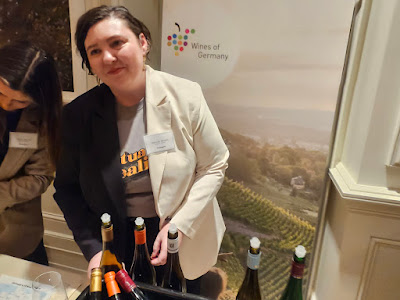




















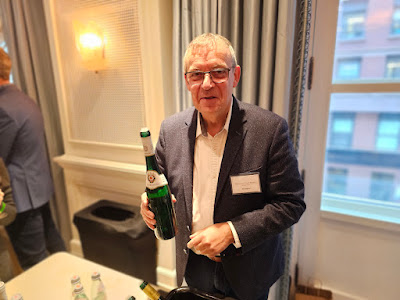



.jpg)
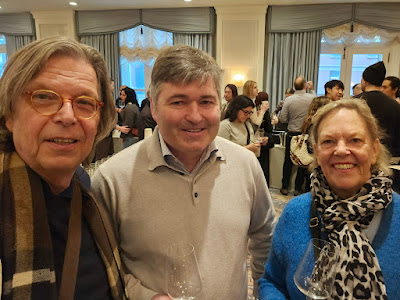


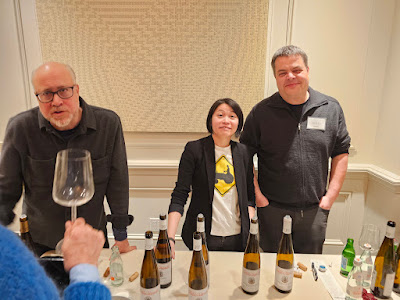

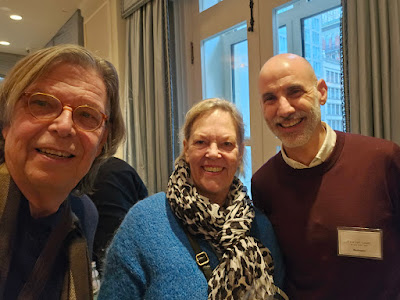





.jpg)



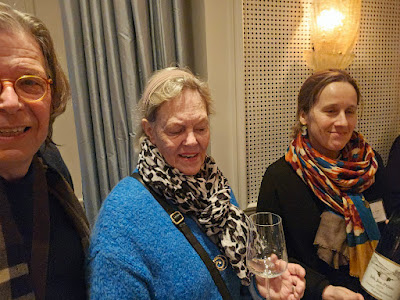






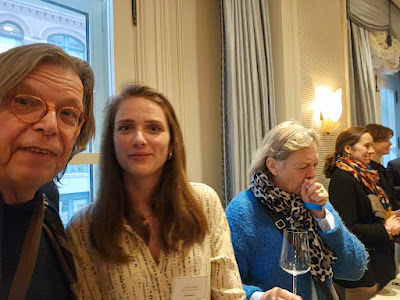


No comments:
Post a Comment